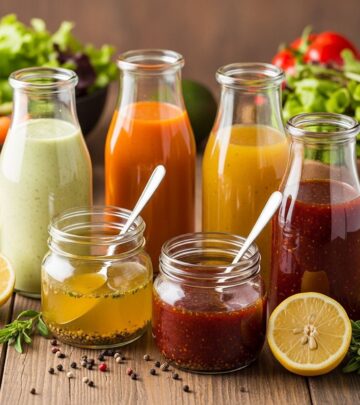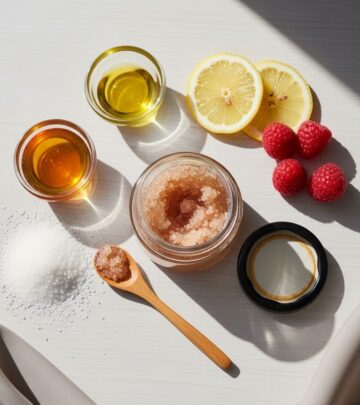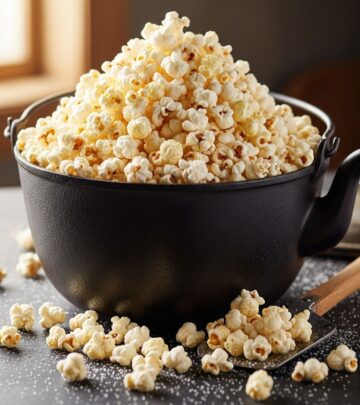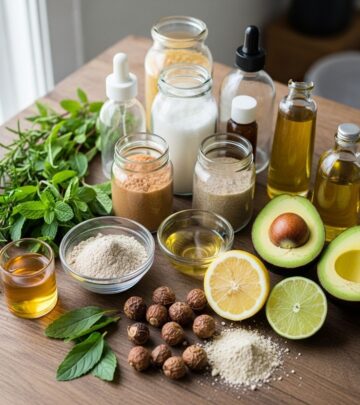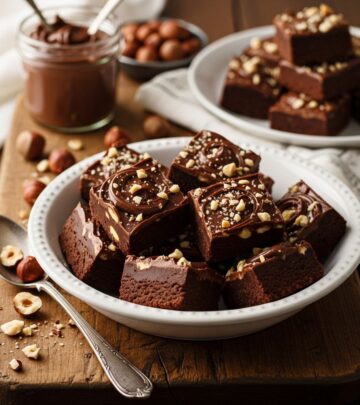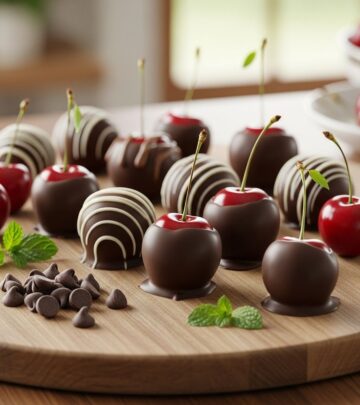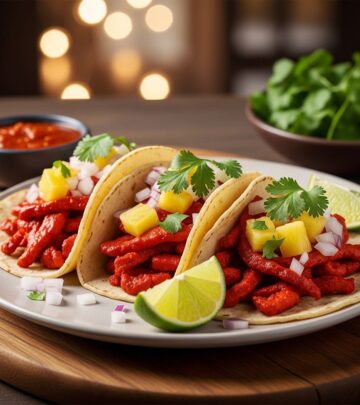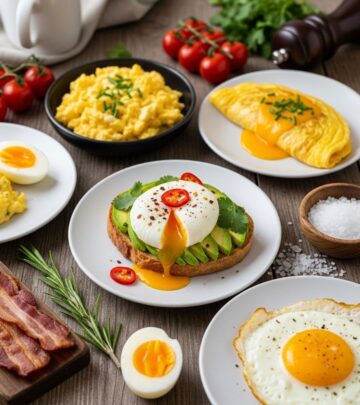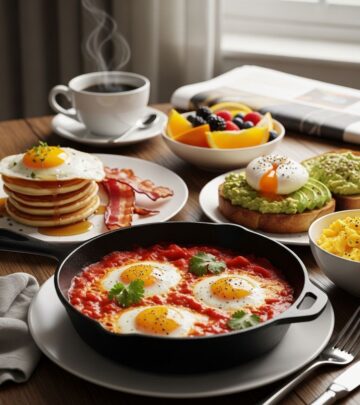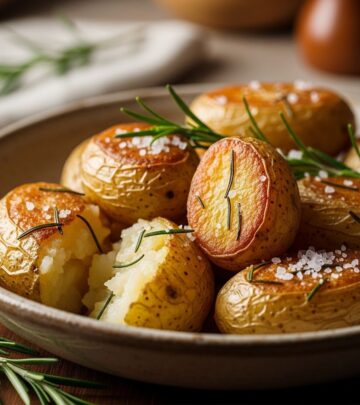Mastering Pan-Fried Steak: The Ultimate Step-By-Step Guide for Perfect Results Every Time
Perfect a golden crust and juicy center with simple skillet techniques in the kitchen.
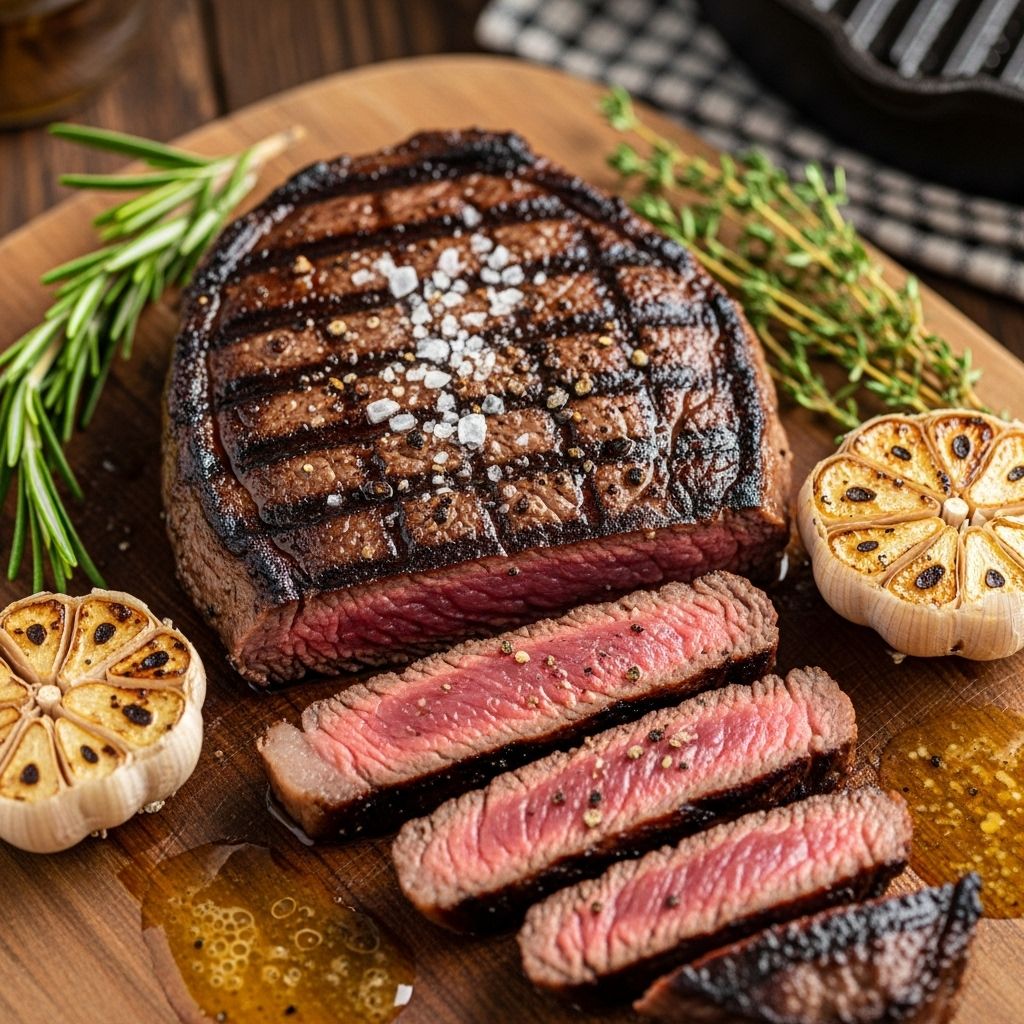
Image: HearthJunction Design Team
How To Pan-Fry Steak: Achieving Steakhouse Perfection In Your Own Kitchen
Pan-frying steak is a classic technique that turns a simple cut of beef into a rich, juicy, and deeply satisfying meal. Done properly, it produces a caramelized crust, tender interior, and layers of flavor that rival your favorite steakhouse. This guide covers every essential detail—from prep and choosing your pan to flavoring and finishing—so you’re equipped to pan-fry steak perfectly, every time.
Why Pan-Fry Steak?
- Fast and Efficient: High heat and direct contact let you cook steak in minutes, with maximum control over doneness.
- Superior Crust: Pan-frying creates a deep, brown caramelized surface that amplifies flavor.
- Versatility: Any kitchen with a stove and skillet can deliver impressive results—the technique works for various cuts like ribeye, strip, or filet.
Step-By-Step Instructions for Pan-Frying Steak
1. Preparing the Steak
- Pat Dry: Remove surface moisture with paper towels. Moisture will steam the steak instead of searing it.
- Season Generously: Liberally apply salt to all surfaces. For best results, salt and refrigerate the steak uncovered for about 45 minutes to dry out the exterior (optional).
- Final Drying: Pat the steak again after refrigeration to ensure a dry surface for searing.
- Bring to Room Temperature: Leave steak out for 20–30 minutes before cooking. This promotes even cooking.
2. Choosing the Right Pan
- Cast-Iron Skillet: Cast-iron is the gold standard for pan-frying steak because it retains heat well and delivers consistent results. Stainless steel pans also work but avoid nonstick or aluminum pans—these have poor heat retention and make it hard to form a proper crust.
- Size Matters: Use a pan large enough for the steak to lie flat without crowding.
3. Preheating and Oiling the Pan
- Heat Level: Set the pan over medium-high heat and let it get very hot. Oil should shimmer or just begin to smoke when ready.
- Oil Selection: Choose oils with a high smoke point (e.g., canola, grapeseed, vegetable, or extra-virgin olive oil). Avoid butter at this stage—it burns easily at high temperatures.
- Coating: Add a thin layer of oil to the pan, swirling just enough to coat the bottom.
4. Seasoning Just Before Cooking
- Pepper: Season steak with freshly ground black pepper on both sides just before placing in the pan.
5. Searing the Steak
- Placing the Steak: As soon as the oil approaches smoking, lay steak into the pan—listen for a loud sizzle.
- Don’t Move It: Leave steak untouched for at least 2–5 minutes depending on thickness—this forms the brown crust.
- Check for Crust: Gently lift the edge with tongs; steak should be deeply browned before flipping.
| Steak Thickness | Initial Sear Time (First Side) | Post-Flip Time | Butter Basting? |
|---|---|---|---|
| Thick (1.5″+) | 5 minutes | 5 minutes (reduce heat) | Yes, after flipping |
| Standard (1″) | 2–3 minutes | 2–3 minutes (reduce heat) | Yes, after flipping |
6. Adding Butter and Aromatics
- Add Flavors: When you flip the steak, add a few tablespoons of unsalted butter, plus aromatics such as smashed garlic cloves and fresh rosemary or thyme sprigs.
- Baste the Steak: Tilt the pan and use a spoon to repeatedly ladle the melted butter and herb mixture over the steak. This adds flavor and promotes even browning.
- Lower Heat: Reduce to medium after adding butter to prevent burning.
7. Checking Doneness
- Internal Temperature Guide:
- Rare: 120–125°F (49–52°C)
- Medium-rare: 125–130°F (52–54°C)
- Medium: 135–145°F (57–63°C)
- Medium-well: 145–155°F (63–68°C)
- Well: 155°F+ (68°C+)
- How to Test: Use an instant-read thermometer for accuracy. For a medium-rare thick steak, aim for about 125°F after basting.
8. Resting and Slicing
- Rest Period: Transfer the steak to a cutting board and let rest for at least 5–10 minutes before slicing. This lets juices redistribute and keeps steak moist.
- Slice Against the Grain: Cut perpendicular to the direction of muscle fibers for tenderness.
- Finish with Flaky Sea Salt: Sprinkle with extra salt just before serving for a flavor burst and subtle crunch.
Ingredients List: Classic Pan-Fried Steak
- 1 thick-cut or standard-cut steak (ribeye, strip, filet, or sirloin; see below)
- Kosher salt & freshly ground black pepper
- 1–2 tbsp. high-heat oil (canola, grapeseed, or olive oil)
- 2–3 tbsp. unsalted butter
- 2–3 garlic cloves, lightly smashed
- 2–3 sprigs fresh thyme or rosemary
- Finishing salt (flaky sea salt)
Optional Steak Cuts for Pan-Frying
- Ribeye: Rich, fatty, and deeply flavorful.
- New York Strip: Tender, beefy, excellent crust potential.
- Sirloin: Leaner and affordable with great texture.
- Filet Mignon: Mild and tender, though less flavorful crust due to lower fat.
Pro Tips for Pan-Frying Steak
- Dry Is Key: Always start with an absolutely dry steak surface.
- Screaming Hot Pan: Don’t rush the preheat—temperature matters for crust formation.
- Minimal Handling: Let steak caramelize undisturbed. Flip only once.
- Use a Thermometer: Doneness is best judged by an instant-read thermometer, not time alone.
- Rest Properly: Juices set and flavors concentrate during rest.
- Basting Flavors: Butter and herbs add both moisture and aroma.
- Finish with Quality Salt: Flaky salt, such as Maldon, elevates flavor and texture.
Common Mistakes to Avoid
- Using a Cold Pan: Steak won’t sear; instead, it streams and sticks.
- Overcrowding: Cramped pans lead to poor browning and uneven cooking.
- Nonstick Pans: Inhibit crust formation due to low heat retention and surface texture.
- Insufficient Seasoning: Steak can handle generous salt and should be well-flavored throughout.
- Skipping the Rest: Slicing immediately lets juices escape, wasting moisture.
- Not Slicing Against the Grain: Results in chewy steak.
Steak Doneness Test: Table
| Doneness Level | Appearance | Internal Temp (°F) | Touch Test |
|---|---|---|---|
| Rare | Red center, cool to slightly warm | 120–125 | Soft, very springy |
| Medium-rare | Warm red center | 125–130 | Springy, yields slightly |
| Medium | Pink center | 135–145 | Firm with some give |
| Medium-well | Faint pink/gray center | 145–155 | Mostly firm |
| Well | Gray-brown, no pink | 155+ | Firm, dry |
Flavor Boosters and Variations
- Compound Butter: Blend butter with herbs, garlic, or blue cheese to top steak after resting.
- Balsamic Reduction: Drizzle with balsamic glaze for a tangy finish.
- Crushed Peppercorns: For a classic steak au poivre, crush black or green peppercorns onto the steak before searing.
- Smoked Salt: Use finishing salt with smoky flavor for a unique twist.
Frequently Asked Questions (FAQs)
Q: What’s the best pan for frying steak?
A: Cast-iron skillet is the top choice for its ability to retain and evenly distribute heat, creating a superior crust.
Q: Should I marinate steak before pan-frying?
A: Most high-quality steaks don’t need marinating. However, a simple dry brine (salt 45 minutes before cooking) enhances flavor and texture.
Q: Can I cook thicker or thinner cuts with the same method?
A: Yes, but adjust cooking times: thicker cuts need longer on each side and possibly finishing in the oven. Thinner cuts cook faster; monitor closely to avoid overcooking.
Q: Why does the steak need to rest after cooking?
A: Resting allows juices to redistribute, ensuring moist and tender slices.
Q: Is it necessary to baste my steak with butter?
A: Butter basting is optional but highly recommended for flavor, sheen, and aromatic richness.
Q: Can I reuse pan juices?
A: Absolutely. Spoon over sliced steak or incorporate into pan sauces.
Summary Table: The Perfect Pan-Fried Steak Process
| Step | Details | Tips |
|---|---|---|
| Prep Steak | Pat dry, season, rest at room temp | Salt and dry for best crust |
| Preheat Pan | Medium-high, until oil shimmers | Cast iron or stainless preferred |
| Sear | Undisturbed until crust | Don’t move early |
| Flip & Butter-Baste | Add butter & aromatics, baste frequently | Reduce heat to avoid burning |
| Check Doneness | Use thermometer; watch for temp | Better accuracy than guessing |
| Rest & Slice | Let juices redistribute, slice against grain | Finish with flaky salt |
Additional Resources
- Try other steak recipes: Sheet Pan Balsamic Steak & Potatoes, Perfect Ribeye—they adapt well to pan-frying methods.
- Explore pan sauces: Use brown bits and butter from the skillet to create a simple wine or cream sauce.
Final Thoughts
Mastering the pan-fried steak isn’t just about following a recipe—it’s about understanding technique, temperature, and timing. With the right preparation and the expert advice in this guide, you can make steak that astounds with delicious depth, mouthwatering aroma, and steakhouse-inspired presentation, all from the comfort of your own kitchen.
References
- https://www.delish.com/cooking/recipe-ideas/a33010975/ribeye-steak-recipe/
- https://www.delish.com/cooking/recipe-ideas/a23365148/how-to-pan-fry-steak/
- https://www.delish.com/cooking/recipe-ideas/recipes/a51272/sheet-pan-balsamic-steak-potatoes-recipe/
- https://www.youtube.com/watch?v=dshcXJ_bV34
- https://www.delish.com/food-news/a46573818/how-to-cook-the-best-steak-of-your-life/
Read full bio of Shinta

